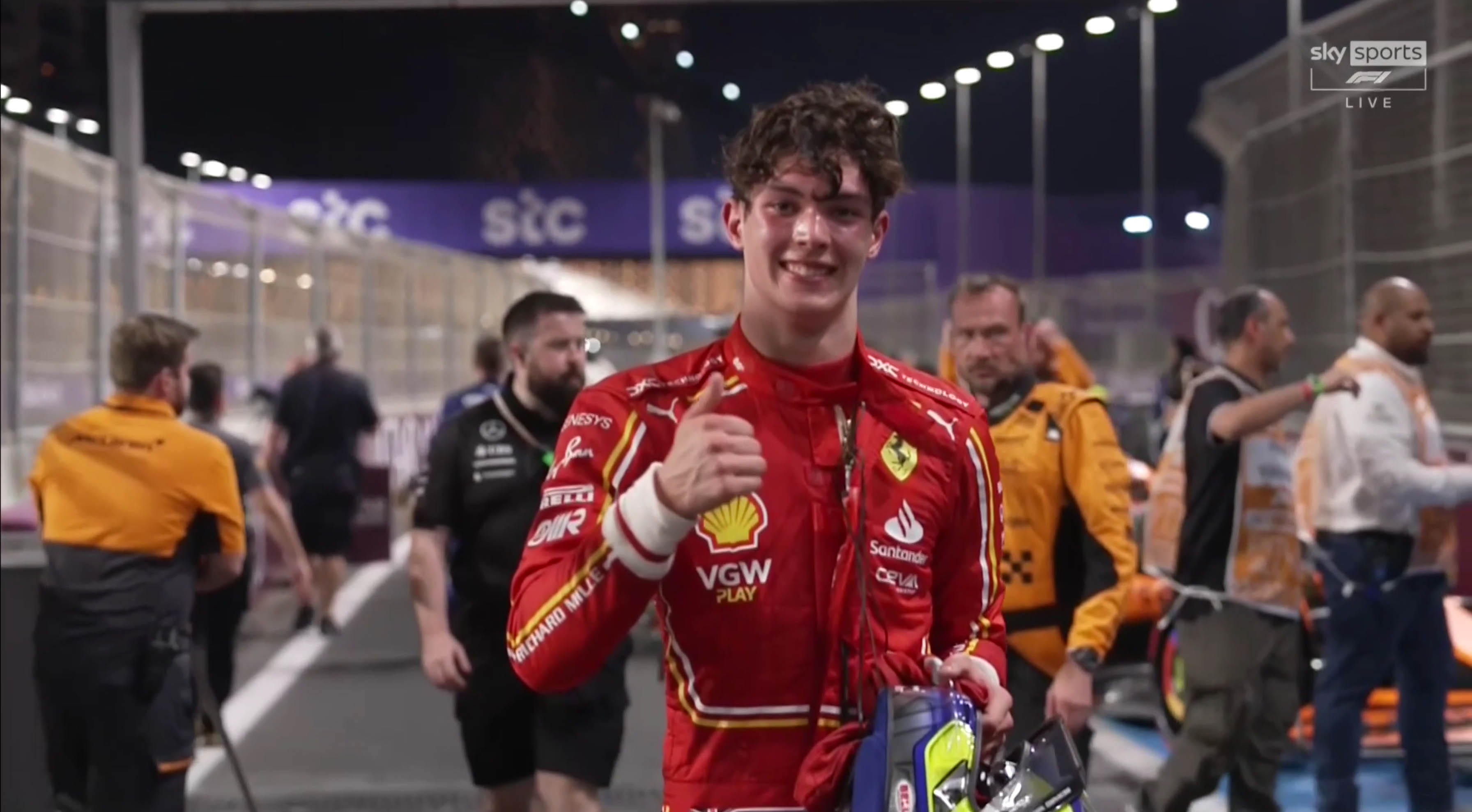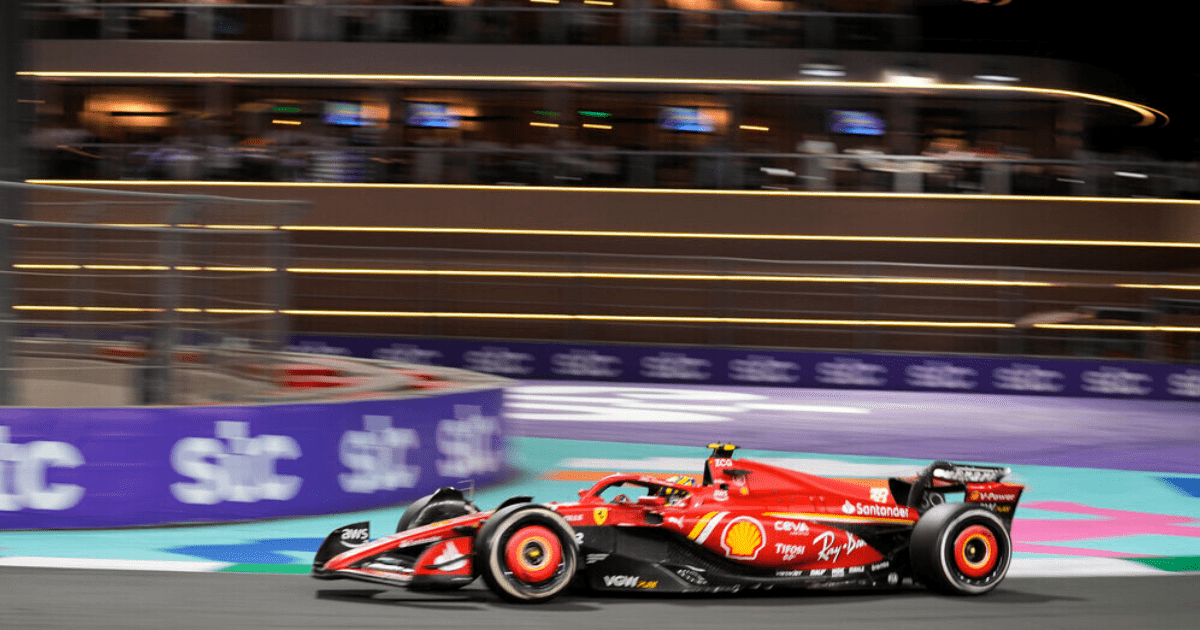Teen F1 Star Oliver Bearman Flunks Driving Test
18-year-old F1 star Oliver Bearman failed his first driving test due to issues with traffic lights. Despite his success on the track, he needed a second attempt before hitting the UK roads.
Driving Test Drama
Oliver Bearman, who recently made waves at the Saudi Arabian Grand Prix, failed his driving test over a "response to traffic lights" error. It is believed he pulled away too quickly or didn't stop as required.
Lesson Learned
After enlisting the help of instructor David Currey for a two-hour lesson, Oliver passed his driving test in October 2022. David praised Oliver's determination to learn and his polite nature throughout the process.
Words of Encouragement
David, the instructor, commended Oliver on passing with no faults and shared that only a few students achieve this each year. He credited Oliver's family for their support and expressed pride in helping him succeed.

On-Track Success
Oliver's F1 debut at Jeddah saw him finish seventh, outperforming seven-time champion Lewis Hamilton. Despite his success, his driving mishap on the road adds a touch of relatability to his story.
Future Plans
Looking ahead, Oliver Bearman's instructor has words of encouragement for the young racer, urging him to continue his journey to success while joking about avoiding racing on the village streets.
Frequently Asked Questions
How has Formula 1’s ‘DRS’ system improved the overtaking?
Drag Reduction System in Formula 1 reduces aerodynamic drag to enhance overtaking. The system allows the rear flap to open in certain conditions. This is usually when a car’s distance from the vehicle ahead is less than a second. This action reduces downforce for a short time, increasing speed and making passing easier. DRS is a way to combat the challenges of aerodynamic turbulent air from the lead car.
How is the design of F1 cockpits aimed at improving driver comfort and safety.
F1 cockpits are meticulously designed focusing on driver safety and comfort. Safety is increased by using carbon-fiber composites for survival cells and padding. The seats are individually molded to fit each driver. This ensures a secure, comfortable fit. The cockpit is designed with a minimum amount of space to facilitate driver extraction.
How do the Formula 1 rules influence car design technology?
Formula 1 regulations and rules are set out by the FIA. These have a huge impact on design and technology. These regulations specify parameters for vehicle dimensions, engine specifications, aerodynamic elements, safety features, and more. Teams must continually innovate to gain competitive advantage within these constraints. The sport’s rules evolve to support closer racing, safer advancements and sustainability goals.
Statistics
- A Formula 1 steering wheel is one of the most complex components of the car, costing up to $50,000 to produce.
- Formula 1 races on average have over 300 sensors on a car, generating more than 1.5 billion data points over a race weekend.
- Modern Formula 1 car chassis are required to withstand a frontal crash test with a peak deceleration of no more than 25 g.
- A typical Formula 1 car’s brake discs can reach temperatures of over 1,000 degrees Celsius during heavy braking.
- Since the hybrid power units were introduced in 2014, thermal efficiency has increased from around 29% to surpass 50%, a remarkable figure compared to standard road car engines.
- In 2021, Formula 1 announced its plan to have a net-zero carbon footprint by 2030, which includes the cars, on-track activities, and the rest of the operations.
- Formula 1 engines can rev up to 15,000 RPM, a decrease from the 18,000 RPM limit set prior to the 2014 regulation changes.
- Formula 1’s research into sustainable fuel aims to create a 100% sustainable fuel for use in F1 engines by the mid-2020s.
External Links
wired.co.uk
racecar-engineering.com
formula1.com
mercedesamgf1.com
f1chronicle.com
autocar.co.uk
renaultsport.com
motorsport.com
How To
How to Understand the F1 Tire Allocation Strategy
To understand F1 tire allocation strategy, familiarize yourself with the different tire compounds provided by the official supplier and how they perform in varying conditions. Watch how teams choose tire sets for races weekends, taking into account track characteristics and forecasts. Examine the rules for tire usage during races, and their impact on strategy. Study pit stops in tire strategy to understand how teams can gain an advantage by balancing tire durability and speed.
Did you miss our previous article…
https://www.sportingexcitement.com/formula-1/ferrari-eyeing-red-bull-staff-amid-christian-horner-scandal/

